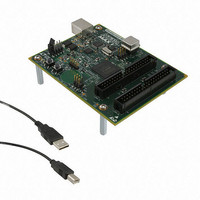DK-DEV-5M570ZN Altera, DK-DEV-5M570ZN Datasheet - Page 114

DK-DEV-5M570ZN
Manufacturer Part Number
DK-DEV-5M570ZN
Description
KIT DEV MAX V 5M570Z
Manufacturer
Altera
Series
MAX® Vr
Type
CPLDr
Datasheets
1.DK-DEV-5M570ZN.pdf
(30 pages)
2.DK-DEV-5M570ZN.pdf
(2 pages)
3.DK-DEV-5M570ZN.pdf
(30 pages)
4.DK-DEV-5M570ZN.pdf
(164 pages)
5.DK-DEV-5M570ZN.pdf
(24 pages)
Specifications of DK-DEV-5M570ZN
Contents
Board, Cable(s), Software and Documentation
Silicon Manufacturer
Altera
Core Architecture
CPLD
Core Sub-architecture
MAX
Silicon Core Number
5M
Silicon Family Name
MAX V
Kit Contents
MAX V CPLD Development Board, USB Cable
Rohs Compliant
Yes
Lead Free Status / RoHS Status
Lead free / RoHS Compliant
For Use With/related Products
5M570ZF256
Lead Free Status / Rohs Status
Compliant
Other names
544-2722
Available stocks
Company
Part Number
Manufacturer
Quantity
Price
- DK-DEV-5M570ZN PDF datasheet
- DK-DEV-5M570ZN PDF datasheet #2
- DK-DEV-5M570ZN PDF datasheet #3
- DK-DEV-5M570ZN PDF datasheet #4
- DK-DEV-5M570ZN PDF datasheet #5
- Current page: 114 of 164
- Download datasheet (5Mb)
7–12
Programming and Reading the UFM with JTAG
MAX V Device Handbook
f
1
In MAX V devices, you can write data to or read data from the UFM using the IEEE
Std. 1149.1 JTAG interface. You can use a PC or UNIX workstation, the Quartus II
Programmer, or the ByteBlasterMV
cable to download Programmer Object File (.pof), Jam
Programming Language (STAPL) Files (.jam), or Jam Byte-Code Files (.jbc) from the
Quartus II software targeting the MAX V device UFM block.
The .pof, .jam, and .jbc files can be generated using the Quartus II software.
Jam Files
Both .jam STAPL and .jbc files support programming for the UFM block.
Jam Players
Jam Players read the descriptive information in Jam files and translate them into data
that programs the target device. Jam Players do not program a particular device
architecture or vendor; they only read and understand the syntax defined by the Jam
file specification. In-field changes are confined to the Jam file, not the Jam Player. As a
result, you do not need to modify the Jam Player source code for each in-field
upgrade.
There are two types of Jam Players to accommodate the two types of Jam files: an
ASCII Jam STAPL Player and a Jam STAPL Byte-Code Player. Both ASCII Jam STAPL
Player and Jam STAPL Byte-Code Player are coded in the C programming language
for 16-bit and 32-bit processors.
For information about UFM operation during ISP, refer to
Programmability
Guidelines.
TM
or ByteBlaster
Chapter 7: User Flash Memory in MAX V Devices
Programming and Reading the UFM with JTAG
TM
TM
II parallel port download
Standard Test and
AN 100: In-System
January 2011 Altera Corporation
Related parts for DK-DEV-5M570ZN
Image
Part Number
Description
Manufacturer
Datasheet
Request
R

Part Number:
Description:
KIT DEV ARRIA II GX FPGA 2AGX125
Manufacturer:
Altera
Datasheet:

Part Number:
Description:
KIT DEV CYCLONE III LS EP3CLS200
Manufacturer:
Altera
Datasheet:

Part Number:
Description:
KIT DEV STRATIX IV FPGA 4SE530
Manufacturer:
Altera
Datasheet:

Part Number:
Description:
KIT DEV FPGA 2AGX260 W/6.375G TX
Manufacturer:
Altera
Datasheet:

Part Number:
Description:
KIT DEV STRATIX V FPGA 5SGXEA7
Manufacturer:
Altera
Datasheet:

Part Number:
Description:
KIT DEVELOPMENT STRATIX III
Manufacturer:
Altera
Datasheet:

Part Number:
Description:
KIT DEVELOPMENT STRATIX IV
Manufacturer:
Altera
Datasheet:

Part Number:
Description:
KIT DEV ARRIA GX 1AGX60N
Manufacturer:
Altera
Datasheet:

Part Number:
Description:
KIT STARTER CYCLONE IV GX
Manufacturer:
Altera
Datasheet:

Part Number:
Description:
KIT DEVELOPMENT STRATIX IV
Manufacturer:
Altera
Datasheet:

Part Number:
Description:
CPLD, EP610 Family, ECMOS Process, 300 Gates, 16 Macro Cells, 16 Reg., 16 User I/Os, 5V Supply, 35 Speed Grade, 24DIP
Manufacturer:
Altera Corporation
Datasheet:

Part Number:
Description:
CPLD, EP610 Family, ECMOS Process, 300 Gates, 16 Macro Cells, 16 Reg., 16 User I/Os, 5V Supply, 15 Speed Grade, 24DIP
Manufacturer:
Altera Corporation
Datasheet:











